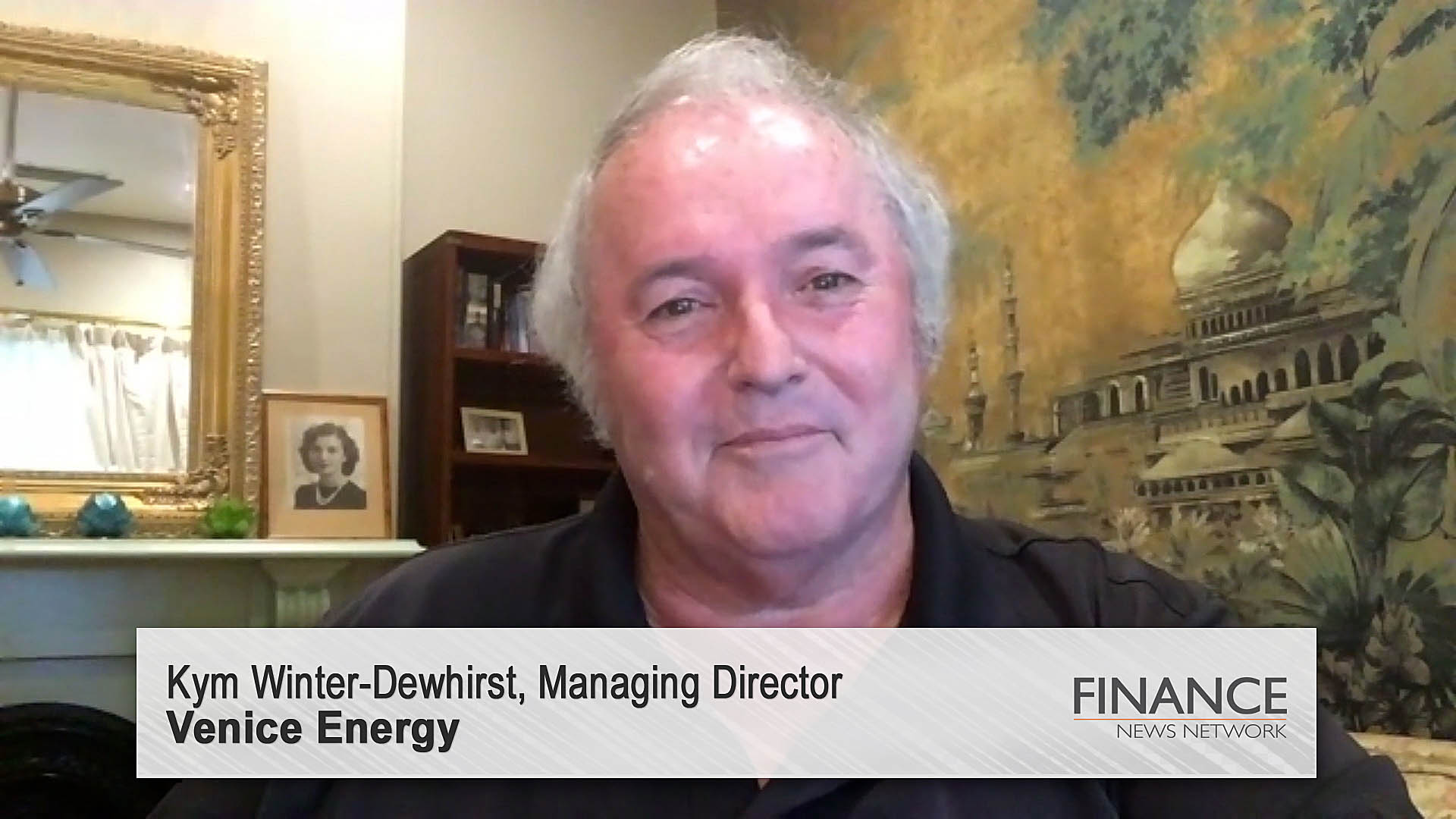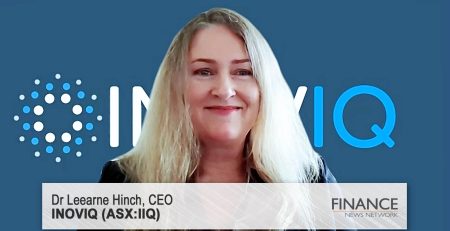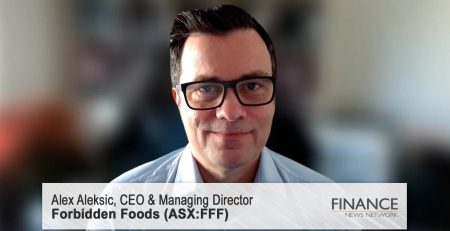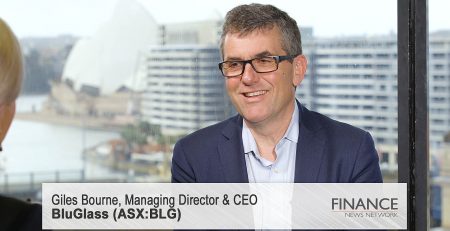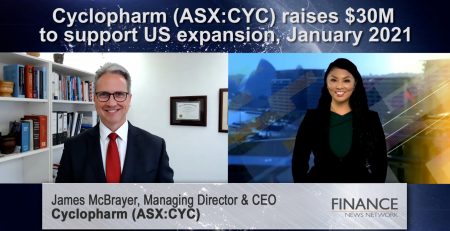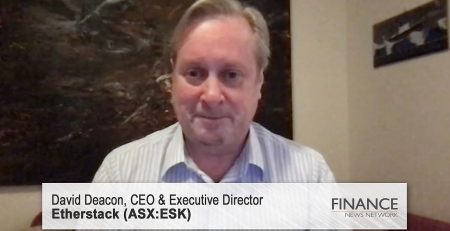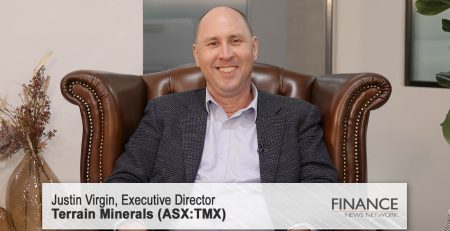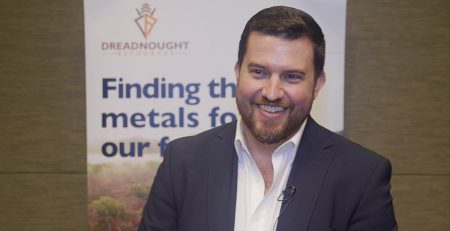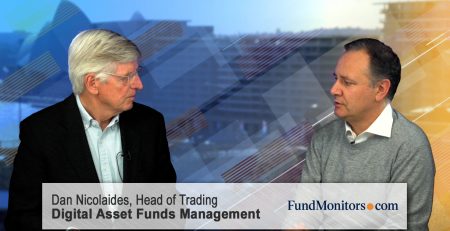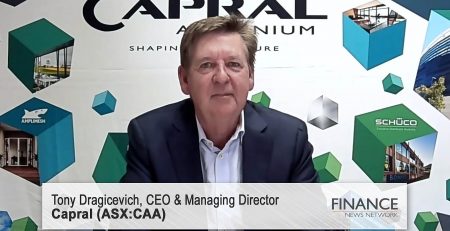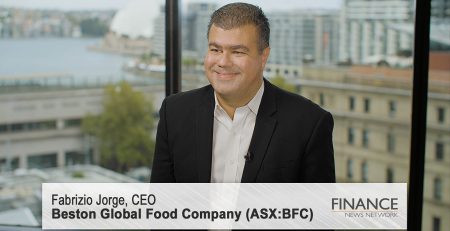Venice Energy to develop world’s first LNG import facility powered by renewable energy
Managing Director Kym Winter-Dewhirst talks about Venice Energy's plans to develop the world’s first LNG import facility entirely powered by renewable energy. The LNG Import and Storage terminal will be located at Outer Harbor, around 14km from Adelaide, and has been designated as “essential infrastructure” by the South Australian State Government.
Melissa Darmawan: Thanks for tuning in. Joining me from Venice Energy to talk about the pre-IPO convertible note raising is Managing Director Kym Winter-Dewhirst. Kym, nice to meet you.
Kym Winter-Dewhirst: And you, Melissa.
Melissa Darmawan: Firstly, can you give us an overview of the company, including some colour around the team?
Kym Winter-Dewhirst: Sure. I mean, the company was started back in the middle of 2017. And our mission at that time was to examine a concept of whether we could develop a gas option for South Australia primarily. Over time, that has morphed into the development of a first-stage project, which is the LNG import terminal. It would be based at the Outer Harbor in Port Adelaide, and would be plugged into the state's gas network. And it would also have the opportunity to plug into the SEA Gas pipeline, which is a 680km pipeline that currently connects the Iona underground storage in Victoria through to Adelaide. But our plan is to make the pipeline bidirectional so that we can grow our business by putting more gas into Victoria, which is the largest gas-consuming state in Australia.
We have a team of great people behind us. I've got partnerships with Arcadis, a very large Dutch infrastructure firm that has been associated with LNG energy and a lot of marine projects around the world over the years. And they've been with us from the very beginning. I also have an agreement with GasLog, which is the ship provider for the Floating Storage and Regasification Unit, the thing that we call the "FSRU". And I also have agreements and supports from great companies like Ashurst, one of the world's great legal companies. And then, of course, I've got a leadership team, which is an integrated team made up of a series of industry professionals with skills and expertise in these areas.
Melissa Darmawan: Can you talk us through how the LNG import facility will be powered?
Kym Winter-Dewhirst: Well, this will be the world's first LNG import terminal to be run and operated entirely from renewable energy. In doing that, we prevent 500,000 tonnes of CO2 over the first 10 years of operation from going into the atmosphere. So, that's a good news story from our point of view. And we can do that here in South Australia better than anywhere else because the state already has 65 per cent of its energy requirements provided by renewable energy. But, at the same time, we can send our gas from this carbon-neutral facility down the pipeline to Victoria, and that will help them remove up to 30 million tonnes of carbon generated by coal over that 10-year period as well. So, all in all, we think we've got a role to play in helping this country transition further down the renewable energy chain. So, we're part of the future. We're not anchored in the past.
Melissa Darmawan: What prompted you to look at this project?
Kym Winter-Dewhirst: Well, back in 2016, September 2016, South Australia underwent a statewide blackout. It's the first time any state in Australia has been blacked out. At the time of the blackout, I happened to be the Chief Executive for the Department of the Premier and Cabinet in South Australia. So, a lot of the responsibility to finding out what was going on and what the solutions were fell to me and others in my agency, as well as the energy agencies and treasury.
When I chose to leave government in early 2017, I really wanted to look at the possibility of trying to find a viable long-term solution for South Australia to ensure that that could never happen again. And I joined a company in Melbourne as an equity partner. We were all resources- and energy-based people. I mean, I'm ex-BHP. And we started to look at this project. And, of course, it's morphed into what it is today, one of only two approved projects in Australia.
Melissa Darmawan: Thanks, Kym. Before we talk about the business in detail, what's the appetite for liquified natural gas at the moment in Australia?
Kym Winter-Dewhirst: Well, the appetite is quite high. The reason we say that is because there are a number of projects like this being investigated up and down the south-east coast of Australia. And, given where all of the forecasts indicate the production of domestic gas is going over the next two to three years, which will see a significant decline, Australia will need additional gas. So, by having LNG import terminals, at least two of them, in the country, different parts of the country, it will open up Australia to the international gas market. And the good news there is there's plenty of LNG to be had.
Melissa Darmawan: Okay, so let's talk about the approval in place.
Kym Winter-Dewhirst: So, we've managed to get our approvals in December last year. It took us 12 months to provide the work, undertake the studies, do the modelling, have the science independently verified, and have that fully reviewed by the various government agencies. Fortunately for us, the energy minister in South Australia sponsored our project as a Crown-sponsored project. It was also declared essential state infrastructure, which is also important. So, that was all good for us. An,d as a consequence, we've got all of our approvals in place, and now we're looking forward to delivering the project, beginning later in 2022.
Melissa Darmawan: Let's talk about the location. What makes Outer Harbor an ideal location for a development like this?
Kym Winter-Dewhirst: Well, you need water access because you have to bring ships in to supply the LNG. In South Australia, the largest operating port is the Port of Adelaide, and it is a channel that comes in from the gulf, and that's called the Outer Harbor, and it turns around on itself to an area called the Inner Harbor. And it's on a peninsula, effectively. And that peninsula is an industrialised peninsula. It has the working port, it has grain terminals, it has power stations, transmission lines, pipelines, a whole series of other industrial infrastructure. And, for us, it was the opportunity to acquire the last two remaining undeveloped berths in the Outer Harbor. So, that's the deepest part of the channel. And that's referred to as berths 9 and 10. On our eastern boundary is the Pelican Point Power Station. On our western boundary is the working port, with the grain terminal and the container port.
So, the beauty of having it there is that it's already zoned for wharf development. So, we didn't have to create something. It's already there and allowed to occur. The activities for that area are marine-related activities, so we bring ships in and we supply goods across the port. All of these things made it very simple, but the most important thing is that from our FSRU to a connection to all of the gas networks that we need, both for South Australia and Victoria, that is just 650m away. And about 500m of that is on our own land. Whereas every other development around the country has anything from about 12km to 50km of pipeline they have to put through often quite sensitive areas or built up areas. So, they face particular challenges. We don't have any of those challenges. We're on reclaimed land. Native title was extinguished more than 22 years ago. So, all of those sorts of barriers that everybody has to get through, they just simply don't exist at this site. So, in many respects, certainly I believe that the site we have is the best site for this type of development anywhere in Australia.
Melissa Darmawan: So, let's talk about the Floating Storage Regasification Unit, so the FSRU. How does it actually work?
Kym Winter-Dewhirst: Well, you bring gas in on what they refer to as an LNGC carrier, and it pulls up at one berth. The permanently moored FSRU sits behind it. Gas is transferred from the carrier via a set of loading arms to a special cryogenic underground pipeline that runs between the two vessels. So, a distance of 400m, 50m. And then it comes up the other side, and another set of loading arms places the gas into the FSRU storage. And there it is maintained at -161 degrees C. So, when you do that, you can take gas and you can turn it to liquid. And it compresses at a ratio of 600 to 1. So, it makes it much easier for transport and storage.
And then there's another outtake pipe that will travel through to the state's gas network, which I'd already mentioned is about 650m long. So, at the point that you want to transfer gas into the state's gas network, you actually heat the gas, you reheat it. And it goes from liquid back into gas, and you transport it through.
So, it's a very simple technology. It's been around for many, many years without incidents. It's often said that if you want to gauge the relative safety of it, people think of gas in certain situations as being highly combustible, and it can be, but in its liquified form you can step into the tank and turn on a blowtorch, and it wouldn't ignite. So, it's a very safe storage medium, and that's why it's used so widely around the world.
Melissa Darmawan: How much gas is the project capable of producing each year? And where will it go?
Kym Winter-Dewhirst: Well, the FSRU is 146,600 cubic metres, and it will need to be topped up by a delivery about every two, three, four weeks. It only takes 36 hours to transfer a load of gas. And then, across the course of the year, it's capable of pumping about 140 to 150 petajoules of gas, so it's quite a large volume. But we're currently, under our state approvals, we're approved to 110. So, we've got more than enough capacity. And the gas would be taken off the FSRU, regasified, put into the gas networks, sent through to domestic and industrial customers in South Australia, and down the SEA Gas Pipeline to various offtake points along the way, but ultimately ending in significant storage in the Iona underground storage facility west of Melbourne.
Melissa Darmawan: Thanks, Kym. Can you give us some colour as to who your customers are going to be?
Kym Winter-Dewhirst: Well, all of the customers or the would-be customers that we're currently negotiating with, we're all signed to nondisclosure agreements, of course. So, I can't actually name them. But what I would say is it will be a diversified range of customers.
Now, we talk to everyone from the big gentailers through to industrial users, through to refinery users, organisations like that. So, we're currently well down the path on those negotiations, and we have an expectation that we will lock in some binding agreements over the next few months.
Melissa Darmawan: And do you have a completion date for the project?
Kym Winter-Dewhirst: Yes. We believe that, if everything goes well over the next few months, we would begin construction of the project in about the third quarter of this calendar year, and we would be able to be ready to take first gas in the first half of 2024.
Melissa Darmawan: Let's talk about the business.
Kym Winter-Dewhirst: Sure.
Melissa Darmawan: Can you tell me more about the financials?
Kym Winter-Dewhirst: Well, it's a pretty simple sort of structure that we put together. We regard it as a commercial model that's both simple, it's scalable and it's derisked. So, the majority of the revenue, which is about 90 per cent, is what we term is risk-free because it's under a tolling arrangement. So, the facility will work as a tolling arrangement. The customers that sign on will sign on with guaranteed volumes each month, across each year of the term of the contracts. The contracts are fixed over five, seven, or ten years, and the fees are fixed over that period of time. So, you know exactly what you're getting. So, they are responsible for sourcing their own LNG.
So we, as the operator of the infrastructure, we don't take any of that risk. We don't take the price risk, we don't take the LNG supply risk. The customers themselves will do that, and they're doing that because they've asked to do it that way. Many of them have very large in-house trading arms, and they want to use them, and they can better reflect the profile of their company's needs. And all they have to do is supply us with a month-by-month breakdown of what they need. And we make sure there's enough gas there in the facility to ensure that all of those needs can be met.
So, it's quite straightforward. One of the real benefits of this arrangement also is that about 45 per cent of the revenue under that model is paid for in advance. So, it's a very low-risk environment for us.
And I don't think I've previously mentioned that we're also looking at a project that will require around about $250 million to implement the project — to build, construct, commission and operate that project. And that'll be funded through a debt to equity combination of about 70 per cent, 30 per cent. So, around about 175 million of that will be in debt, about 75 million in equity.
Melissa Darmawan: So now to the current offer. How much are you looking to raise and where will the funds go?
Kym Winter-Dewhirst: Well, Melissa, we're looking to raise $6 million. It'll be via a converting note, which will carry a 15 per cent discount and a 12 per cent coupon. That money, that raise is so that we can complete the final amount of work that we need to do before we move to an IPO. And the pathway from the IPO, of course, is afterwards to then release a prospectus to the market. When that closes, we would list on the stock exchange. By listing there, we raise our equity and we use a consortium of banks to raise the debt.
Melissa Darmawan: So, what are the risks?
Kym Winter-Dewhirst: We do risk analysis. We have a risk matrix. We have mitigating and management strategies in place to cover all of the things that we believe are the potential risks. But we think that this is a largely derisked project. It's quite straightforward. None of the technologies involved here are radical. Nothing is new, everything is off the shelf, everything's been done in multiple locations around the world. So, all the risks are known and we plan accordingly. We work with SafeWork SA, we work with Marine and Harbours, we work with the Australian Marine security guys. So, there's plans for everything in place to deal with these sorts of things. So, from our point of view, very little in the way of risk that we can see at this stage. It was always harder before you get project approvals, but now we have all the ministerial and Crown approvals in place. So, it makes the pathway forward a much smoother journey for all of us.
Melissa Darmawan: And Kym, when do you expect to IPO?
Kym Winter-Dewhirst: Well, Melissa, we're looking towards September this year, so it's not too far away from where we are now. And that'll be an exciting moment for us, and will lead at the same time to us breaking ground at the site down there at the Outer Harbor in Port Adelaide. So, all very exciting.
Melissa Darmawan: Kym, it was great speaking with you. Good luck with the offer.
Kym Winter-Dewhirst: Thanks very much, Melissa.
Ends
Offer details
Term sheet available here. The convertible note converts into ordinary equity at the time of IPO at a 15 per cent discount to the listing price. For example, if the IPO price is $0.44, note holders would have an issue price of $0.374. The 12 per cent per annum coupon rate is payable on conversion.
Open Date: 14 March 2022
Close date: 8 April 2022
For further details, contact:
- Michael Holland: 0413 832 336, michaelholland@sequoia.com.au
- Enzo Salvatore: 0419 879 424, esalvatore@sequoia.com.au
- Alex Fabbri: 0419 879 424, alexfabbri@sequoia.com.au
Disclaimer
Sequoia Corporate Finance Pty Ltd ACN 602 219 072 is a Corporate Authorised Representative No 469074 of Sequoia Wealth Management Pty Limited, ACN 002 314 310, AFSL No. 472387) (Sequoia, we or us). Sequoia and/or its associated entities, directors and/or its employees may have a material interest in, and may earn brokerage, fees, commissions or other benefits and advantages from, the Offer or any securities referred to in this document or may provide services to the Company and/or its controlled entities and related bodies corporate (Group Companies). Sequoia Corporate Finance (SCF) is Lead Manager to this issue and SCF and its associates have received fees & options in the past from Venice and will receive fees for this current issue.
This Offer is made to sophisticated investors as described in section 708(8) of the Corporations Act (see definition above), an experienced investor as described in section 708(10) of the Corporations Act (that is this Offer is made to you through an Australian Financial Services Licensee – see definition above) or a professional investor within the meaning of section 708(11) of the Corporations Act
Sequoia Financial Group is the parent company for Finance News Network.
Copyright 2022 – Finance News Network
Source: Finance News Network

